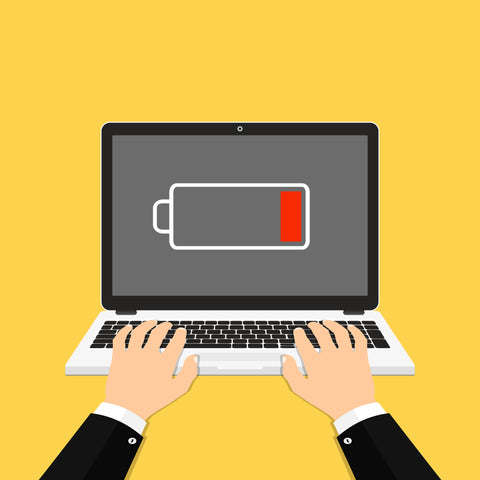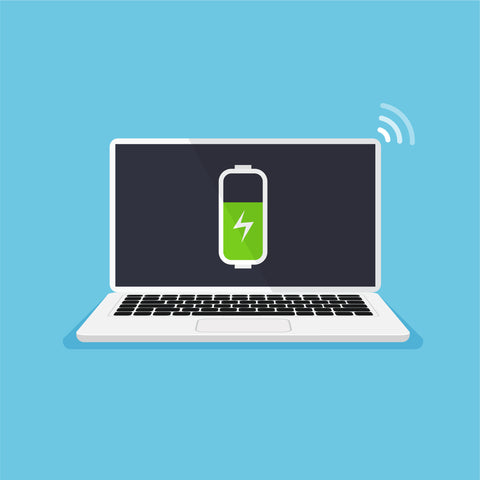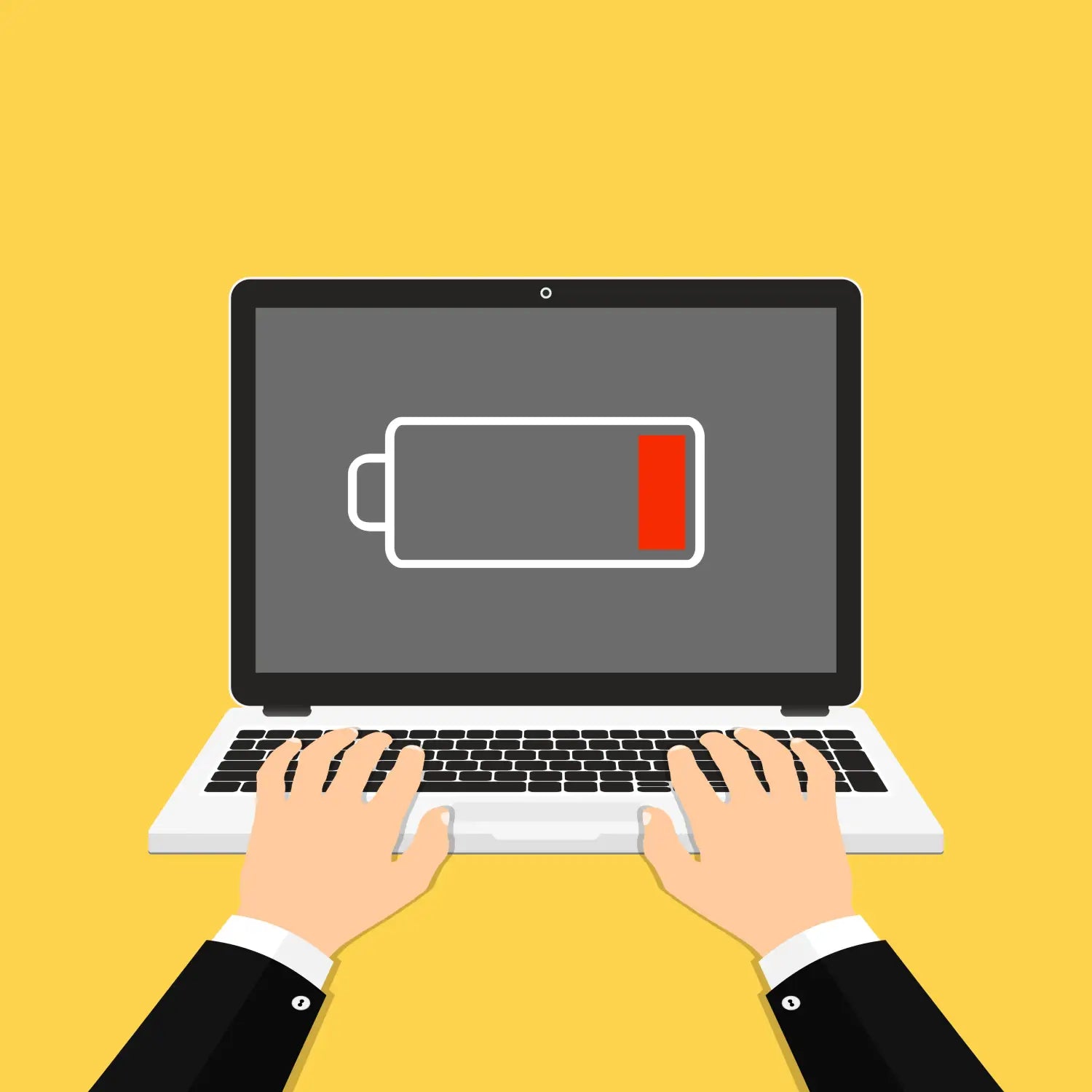Laptops are designed for on the go, so proper care and maintenance of your battery is essential. Solving laptop battery problems can involve several troubleshooting steps, so we’ve provided a step-by-step guide to help you address your laptop battery issues:
Check the Power Source
- Ensure that your laptop is properly connected to a power source and that the charger is plugged in securely.
- Verify that the power outlet or surge protector is working.
- Examine the charger and its cable for any visible damage or fraying. If you find any, consider replacing them.
- Ensure that the charging indicator on your laptop lights up when the charger is connected. If not, try a different power outlet or charger if possible.
- If you find any damage to the charger or cable, such as exposed wires or bent connectors, replace them immediately. Damaged cables can affect charging.
Adjust Power Settings
Adjusting power settings can significantly impact battery life. You can create a custom power plan with settings tailored to your needs.
On Windows:
- Go to "Control Panel" > "Hardware and Sound" > "Power Options."
- Choose a power plan that suits your needs. "Balanced" is a good default option.
-
Click on "Change plan settings" to adjust settings further, like turning off the display or putting the computer to sleep sooner.

For any other operating systems, refer to their literature on reputable websites for similar instructions on adjusting your power settings.
Check Battery Health
You can check the health of your laptop battery in Windows by opening the Command Prompt as an administrator and running the command powercfg /batteryreport. This generates a battery report that provides information about your battery's capacity, usage history, and more:
- Right-click on the battery icon in the system tray and select "Power Options."
- Click on "Change plan settings" > "Change advanced power settings."
- Under "Battery," you can adjust settings related to battery usage and conservation.
For any other operating systems, refer to their literature on reputable websites for similar instructions on checking your battery health.
Update Battery Drivers
In some cases, updating your laptop's battery drivers can help. You can do this through your device manager.
To update your battery drivers on Windows, go to the Device Manager, expand the "Batteries" section, right-click on "Microsoft ACPI-Compliant Control Method Battery," and select "Update driver."
Calibrate Your Battery (if applicable)
 Battery calibration helps recalibrate the battery's gauge to provide a more accurate estimate of remaining battery life. Refer to your laptop's user manual for specific calibration instructions.
Battery calibration helps recalibrate the battery's gauge to provide a more accurate estimate of remaining battery life. Refer to your laptop's user manual for specific calibration instructions.
Monitor Battery Usage
Keep an eye on which applications or processes are consuming the most battery power. Task Manager on Windows or Activity Monitor on macOS can help identify resource-intensive programs.
Check for Background Processes
Make sure there are no unnecessary background processes running that could be draining your battery. Close unused apps and processes.
Disable Unused Hardware
Turn off Wi-Fi, Bluetooth, and other peripherals when you're not using them.
Replace the Battery (if necessary)
If you need to replace the battery, first, check if it's user-replaceable. Some laptops have sealed batteries that require professional replacement. If your laptop's battery is replaceable, you can typically find compatible replacement batteries online or through the laptop manufacturer's website.
Update Your Operating System
Ensure that your laptop's operating system is up to date, as updates often include improvements related to battery life.
Professional Help
If you've tried all of the above steps and are still experiencing battery problems, it may be time to consult a professional technician or contact your laptop manufacturer's support for further assistance.
 If your laptop is still under warranty, contact the manufacturer's customer support for assistance. If it's out of warranty and you're uncomfortable performing hardware replacements yourself, you could come to us and we can replace it for you. Check out our services page and book in with a technician (https://directcomputers.co.uk/pages/it-support).
If your laptop is still under warranty, contact the manufacturer's customer support for assistance. If it's out of warranty and you're uncomfortable performing hardware replacements yourself, you could come to us and we can replace it for you. Check out our services page and book in with a technician (https://directcomputers.co.uk/pages/it-support).
Remember that laptop battery life naturally degrades over time, so if your laptop is several years old, it may not perform as well as it did when it was new, even with proper care so your only option maybe to replace it.







